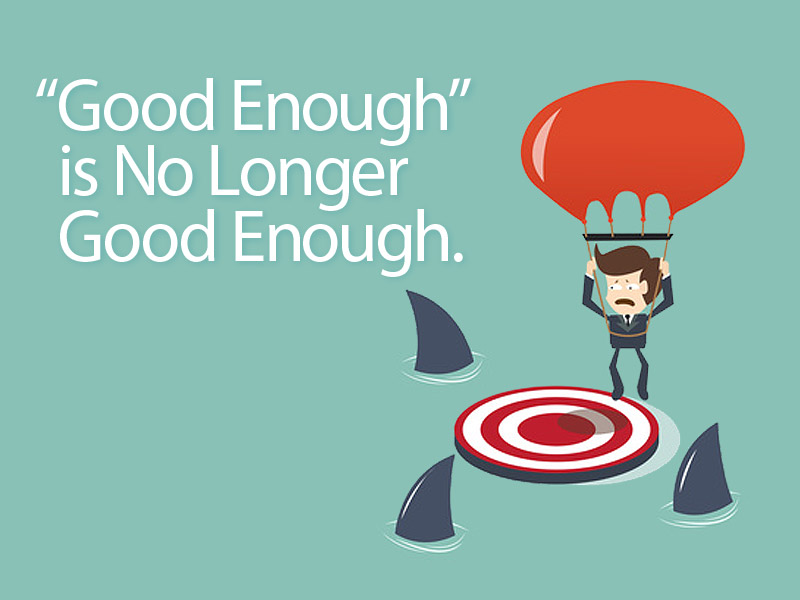Evolving technology brings with it huge opportunities to distinguish our businesses while marginalizing those who fail to embrace it.
Technology brings both benefits and challenges to marketing communications. Services that small businesses previously considered “big-ticket” items are being commoditized, making them more accessible and affordable than ever before.
Everything from desktop video production and stock photography, to Google Apps and freeware, have widened the pool of available technology to a larger and, to some extent, less-sophisticated user base. Today, more and more small businesses are employing tools and tactics that they previously considered unattainable due to the costs or learning curves associated with them.
That’s the good news.
But, as the saying goes, “The more things change, the more they remain the same.” One risk that comes with these commoditized platforms and services is that they tend to bring contentment to those who feel they finally have what they need to get by. Unfortunately, the reality is that it’s “good enough” only if their competitors feel the same way. And, chances are they don’t.
That’s the not-so-good news.
While this wealth of technology is great for businesses in many ways, all it mostly does is raise the playing field. Tools and apps are still no replacement for talent, experience and best practices. Businesses still face the same challenges of leveraging what makes them great, using it to distinguish themselves against their competitors and finding the channels through which they can reach their prospects. For the most part, only the mechanisms have changed. The need for strategic and creative communications is now amplified more than ever before. And, it’s very much the difference-maker.
For example, the advent of open-source web site platforms, like WordPress and Joomla, has been extremely beneficial to small businesses. They’ve fostered a robust development community and brought convenience and access to less-tech-savvy users. However, the flip-side is that more and more competitors are also using these new tools. And, while it’s nice to be able to check off a spanking-new website from that “to do” list, businesses now need to get more creative and take further steps to avoid the samey-ness that comes with pre-designed templates and online image resources. The bar is still there, but it’s a bit higher.
Those who can harness new technology without losing sight of the basics, like branding, creativity and targeted outreach, will be poised for greater success than those who find contentment with what they consider, “Good enough.” Contentment leads to complacency, which undermines growth.
There’s no reason to be intimidated. Constant change also brings with it huge opportunities. Evolving technology keeps all of us on our collective toes, makes us more aware of our competitors and presents more ways to make our marks than ever before. Moreover, it marginalizes those who fail to embrace it.
Despite all of this change, one remaining constant is that it’s still vital for businesses to maintain a team of experts to help them navigate those opportunities and stay along the competitive arc. You’re still only as good as the company you keep. So, embrace the continual change. And, instead of trying to be “good enough,” find ways to be your best.
Related Posts
Get real.
Don’t claim to be what you’re not. Embrace what you are, what makes you great and why that should be important to your audience.
WHO are you selling to, anyway?
Price, style, features and convenience will always be important factors to closing a sale. However, there’s a lot more to promoting your business than what your goods or services mean to your direct consumers. In fact, your audience is likely much broader than you realize.
WHAT are you selling, anyway?
In order to be an effective marketer, it’s imperative that we continually remind ourselves of the true value we bring to our markets. Usually, that customer benefit is intangible. Quite often, we learn that it’s an emotional one.
A dash of humility makes a better pie.
Isolating yourself in a bubble of self-adulation might make you feel good. But, it doesn’t get you anywhere and, worse yet, it prevents you from uncovering opportunities to distinguish your business from the competition.
An act of aggression can be a good thing.
Emulating your competition projects a sense that you belong. But, ultimately, your offering will only succeed if you can effectively distinguish it from the other guys. And keep doing so.
The last thing they need to hear Is all about you.
Sure, “all about you” is important. And you may be the one of best there is. But, when you promote your business, you’ll be better served if you save the best (you) for last.







